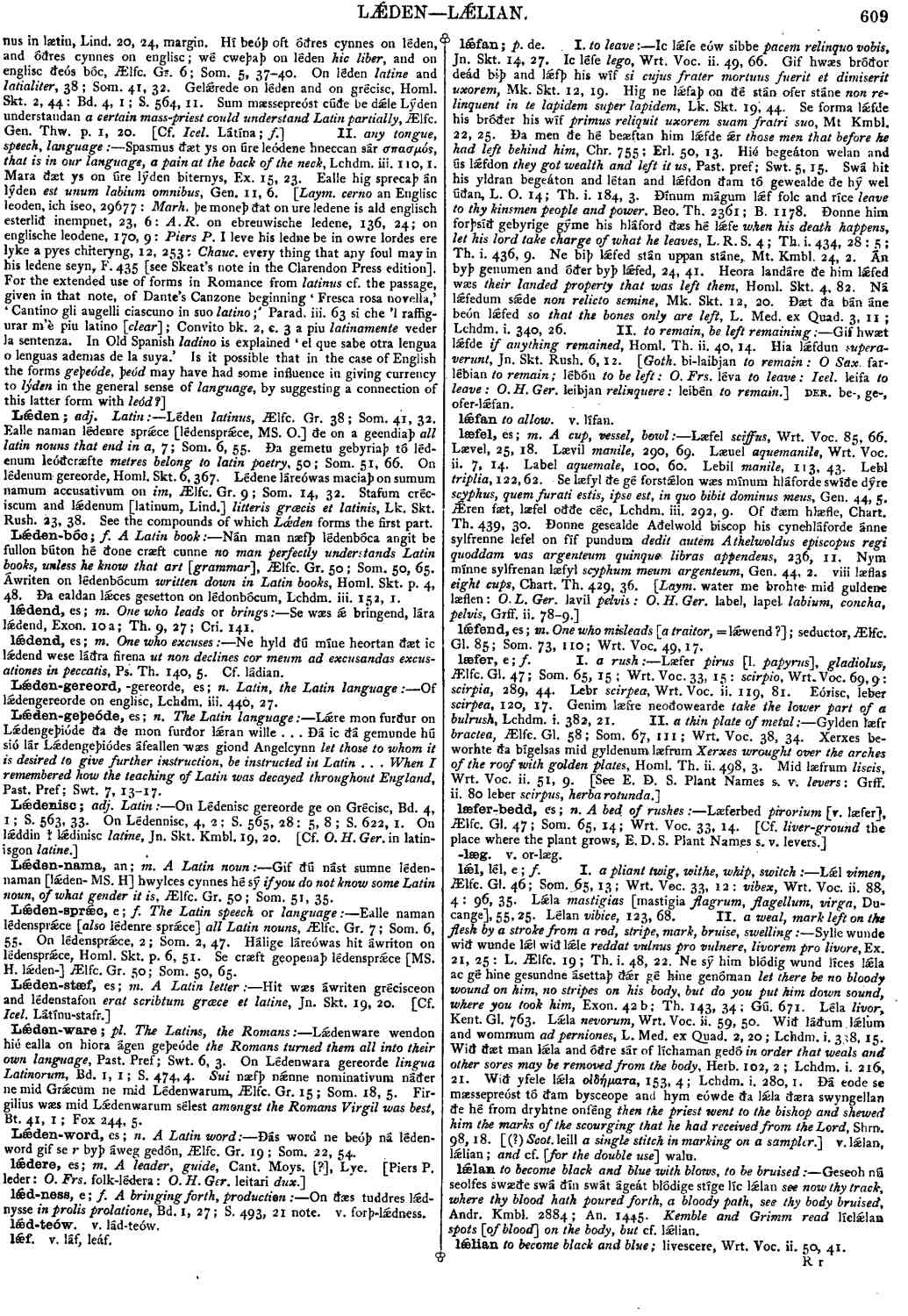lǽl
- noun [ feminine ]
-
Lǽl
vimen,
- Ælfc. Gl. 46 ;
- Som. 65, 13 ;
- Wrt. Voc. 33, 12 :
vibex,
- Wrt. Voc. ii. 88, 4 :
- 96, 35 .
-
Lǽla
mastigias [mastigia flagrum, flagellum, virga, Ducange],
- 55, 25.
-
Lélan
vibice,
- 123, 68 .
-
Sylle wunde wið wunde lǽl wið lǽle
reddat vulnus pro vulnere, livorem pro livore,
- Ex. 21, 25 :
- L. Ælfc. 19 ;
- Th. i. 48, 22 .
-
Ne sý him blódig wund líces lǽla ac gé hine gesundne ásettaþ ðǽr gé hine genóman
let there be no bloody wound on him, no stripes on his body, but do you put him down sound, where you took him,
- Exon. 42 b ;
- Th. 143, 34 ;
- Gú. 671 .
-
Léla
livor,
- Kent. Gl. 763 .
-
Lǽla
nevorum,
- Wrt. Voc. ii. 59, 50 .
-
Wið láðum lǽlum and wommum
ad perniones,
- L. Med. ex Quad. 2, 20 ;
- Lchdm. i. 338, 15.
-
Wð ðæt man lǽla and óðre sár of líchaman gedó
in order that weals and other sores may be removed from the body,
- Herb. 102, 2 ;
- Lchdm. i. 216, 21 .
-
Wið yfele lǽla
oίδήματα,
- 153, 4 ;
- Lchdm. i. 280, 1 .
-
Ðá eode se mæssepreóst tó ðam bysceope and hym eówde ða lǽla ðæra swyngellan ðe hé from dryhtne onféng
then the priest went to the bishop and shewed him the marks of the scourging that he had received from the Lord,
- Shrn. 98, 18.
Bosworth, Joseph. “lǽl.” In An Anglo-Saxon Dictionary Online, edited by Thomas Northcote Toller, Christ Sean, and Ondřej Tichy. Prague: Faculty of Arts, Charles University, 2014. https://bosworthtoller.com/20955.
Checked: 1